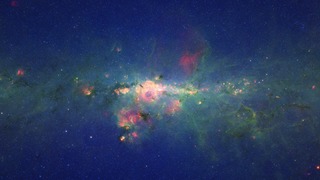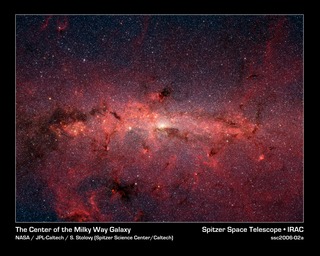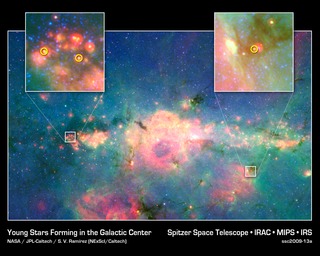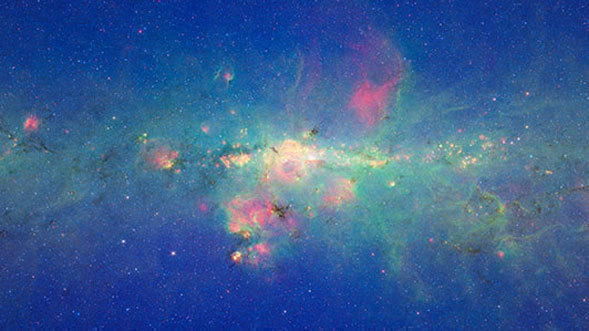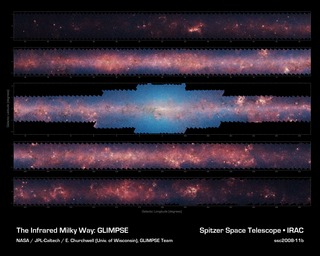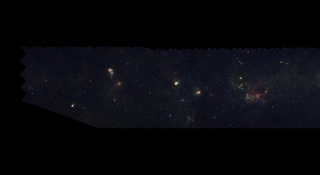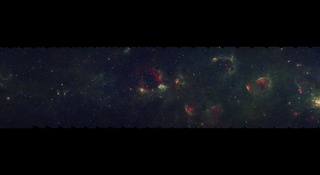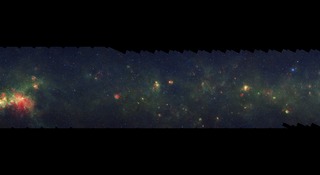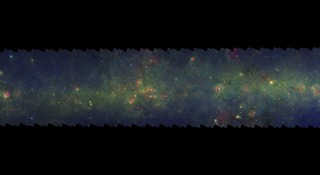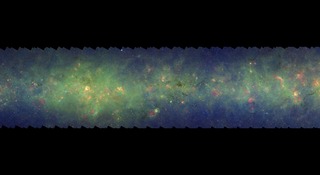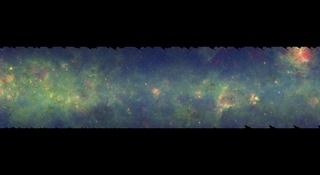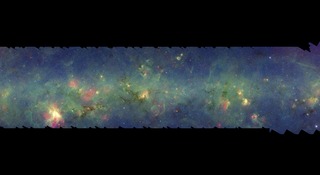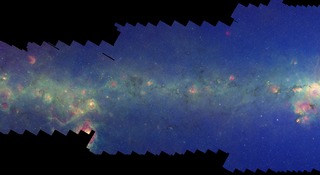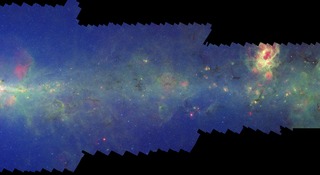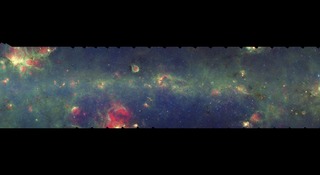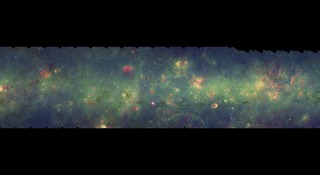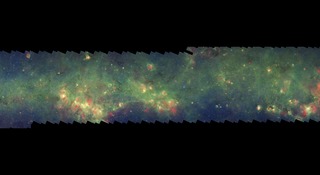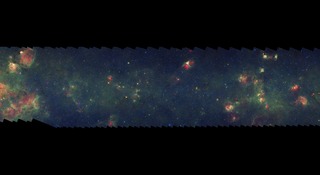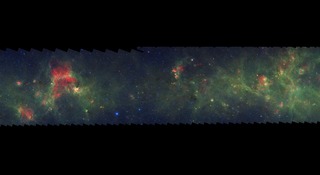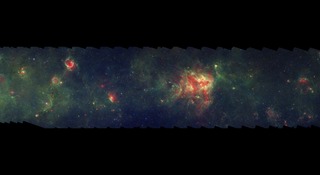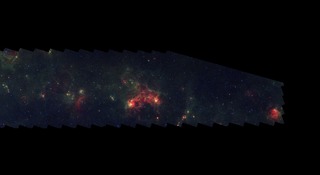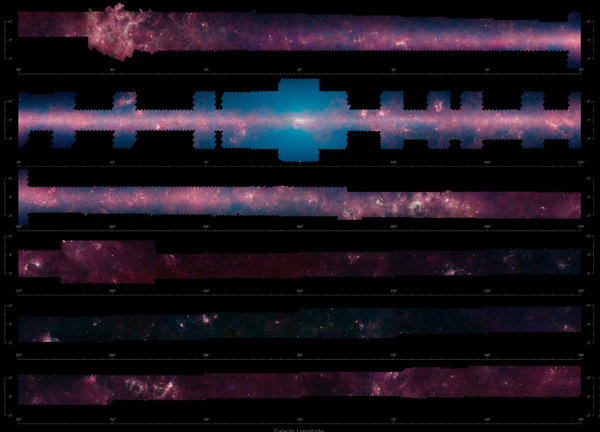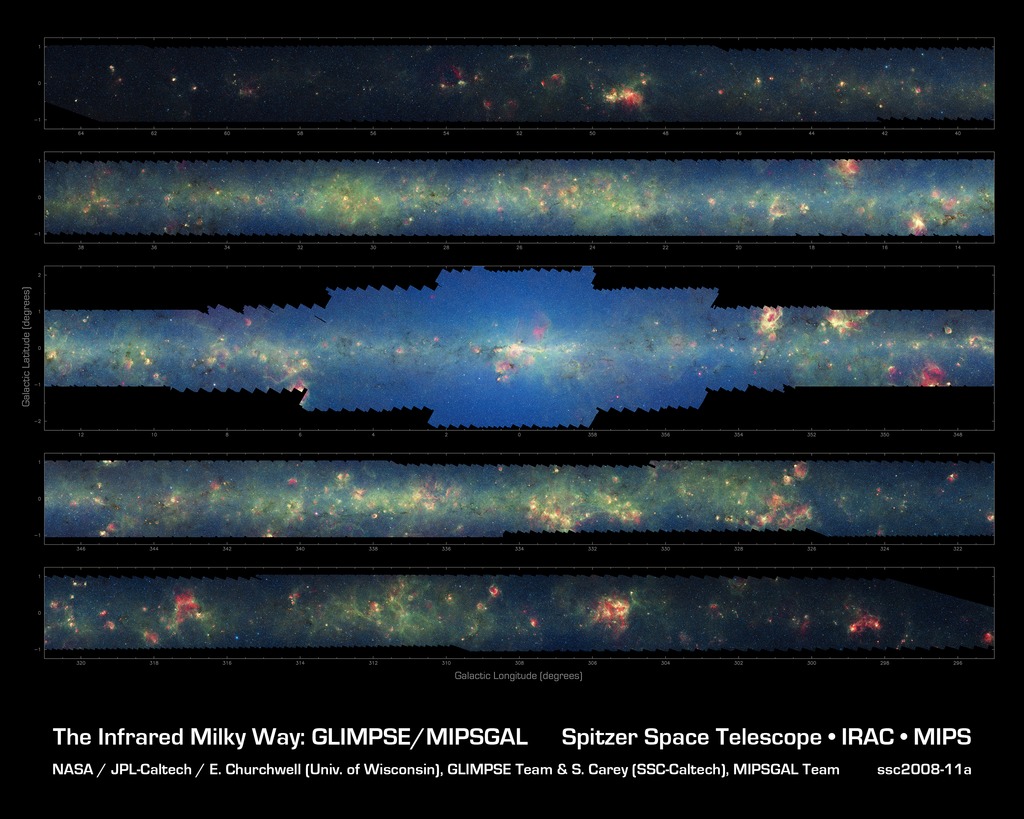
Credit: NASA/JPL-Caltech/Univ. of Wisconsin
Observation • June 3rd, 2008 • ssc2008-11a
ssc2008-11a
More than 800,000 frames from NASA's Spitzer Space Telescope were stitched together to create this infrared portrait of dust and stars radiating in the inner Milky Way.
As inhabitants of a flat galactic disk, Earth and its solar system have an edge-on view of their host galaxy, like looking at a glass dish from its edge. From our perspective, most of the galaxy is condensed into a blurry narrow band of light that stretches completely around the sky, also known as the galactic plane.
In this mosaic the galactic plane is broken up into five components: the far-left side of the plane (top image); the area just left of the galactic center (second to top); galactic center (middle); the area to the right of galactic center (second to bottom); and the far-right side of the plane (bottom). From Earth, the top two panels are visible to the northern hemisphere, and the bottom two images to the southern hemisphere. Together, these panels represent more than 50 percent of our entire Milky Way galaxy.
The swaths of green represent organic molecules, called polycyclic aromatic hydrocarbons, which are illuminated by light from nearby star formation, while the thermal emission, or heat, from warm dust is rendered in red. Star-forming regions appear as swirls of red and yellow, where the warm dust overlaps with the glowing organic molecules. The blue specks sprinkled throughout the photograph are Milky Way stars. The bluish-white haze that hovers heavily in the middle panel is starlight from the older stellar population towards the center of the galaxy.
This is a three-color composite that shows infrared observations from two Spitzer instruments. Blue represents 3.6-micron light and green shows light of 8 microns, both captured by Spitzer's infrared array camera. Red is 24-micron light detected by Spitzer's multiband imaging photometer.
About the Object
- Name
- Milky Way • Galactic Plane • Galactic Center
- Type
- Galaxy > Component > Disk
- Galaxy > Component > Center/Core
- Nebula > Type > Interstellar Medium
- Nebula > Type > Star Formation
Color Mapping
| Band | Wavelength | Telescope |
| Infrared | 3.6 µm | Spitzer IRAC |
| Infrared | 4.5 µm | Spitzer IRAC |
| Infrared | 24.0 µm | Spitzer MIPS |
